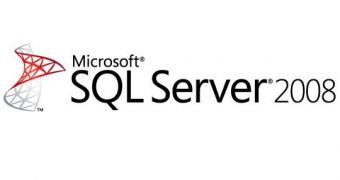Officially launched in February 2008, but released to manufacturing in early August, SQL Server 2008 is already at the top of the data warehousing and transaction processing game worldwide. The Redmond company applauded the fact that its data management and business intelligence platform could support applications capable of scaling up to 1 petabyte of storage. As multi-terabyte databases are no longer a novelty, the petabyte milestone in terms of data storage becomes the next step in the evolution of SQL Server.
The Panoramic Survey Telescope and Rapid Response System, (Pan-STARRS) is the example offered by Microsoft when it comes to one of the world's largest databases, with SQL Server 2008 at its infrastructure. The Redmond company indicated that the Pan-STARRS architects are building a massive 1.1 petabytes (quadrillion bytes) of disk storage for the celestial imagery which would be provided by four telescopes via 1.4-gigapixel resolution digital cameras. At this point in time, with just a single functioning telescope, Pan-STARRS is producing 1.4 terabytes of imagery each night.
“There are only a handful of databases that large in the world,” revealed Ted Kummert, corporate vice president of the Data and Storage Platform Division at Microsoft. “If SQL Server can handle applications this large, imagine how well it can meet the needs of the average enterprise. SQL Server 2008 is packed with technologies to scale up individual servers and scale out very large databases.”
Although SQL Server 2008 hit RTM just three months ago, Microsoft is already hard at work on the next versions of the platform. At the Windows Hardware Engineering Conference (WinHEC) in Los Angeles this week, Microsoft showcased the evolution of SQL Server 2008, namely SQL Server, code-named “Kilimanjaro” which would come with support for in excess of 64 processor cores.
“SQL Server 2008 offers a robust, scalable and secure database platform to support critical business applications. Large multiterabyte databases with SQL Server have become common for both transactional applications and data warehouses, as enterprises build larger and complex databases,” explained Forrester Research analysts Noel Yuhanna, Mike Gilpin and David D’Silva, “SQL Server 2008 Ups Pressure on Competitors; Microsoft Boosts Manageability, BI, Performance, Productivity and Security”.

 14 DAY TRIAL //
14 DAY TRIAL //